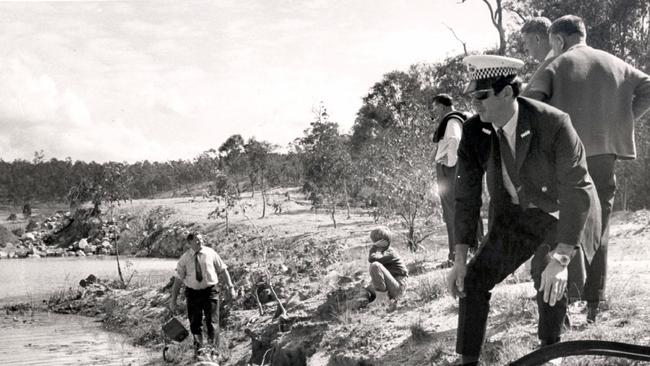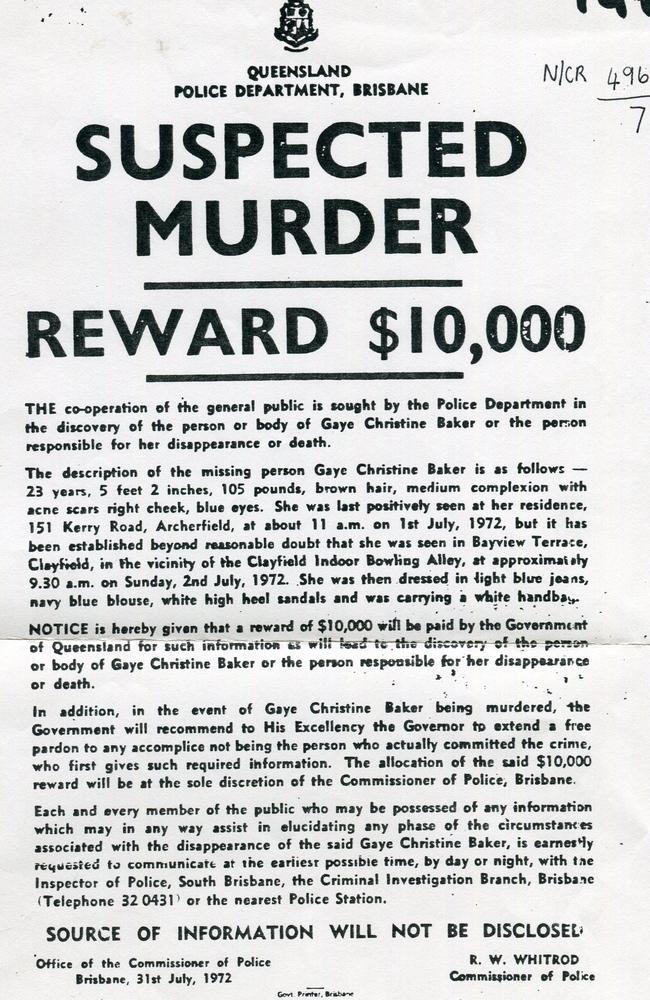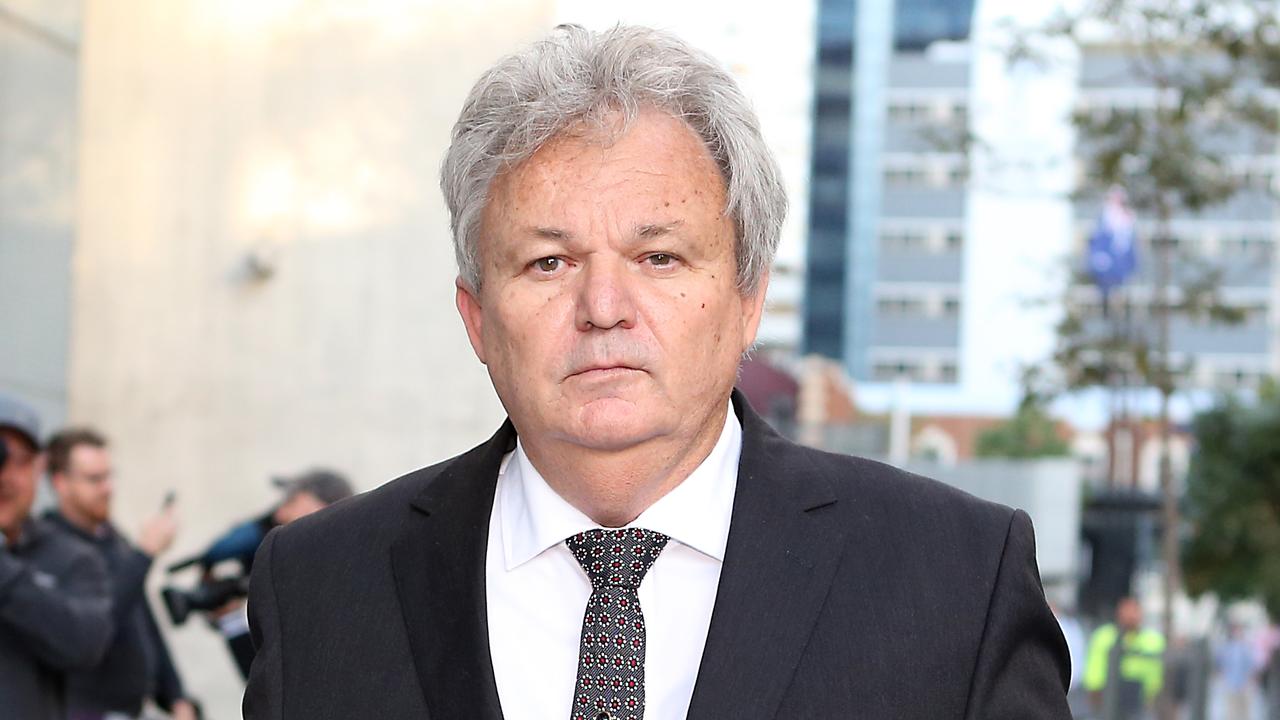Crime read: RAAF Police Officer Gaye Baker mysteriously vanished without a trace on July 2, 1972
A MERE 100 metres from a bend on a busy arterial road there is a series of deep dams where police searched in vain for a woman’s body. Many believe she is still down there.

Crime Reads
Don't miss out on the headlines from Crime Reads. Followed categories will be added to My News.
THE two calls came through to police on Saturday 11 August, 1973.
On both occasions, the person on the other end of the line simply said Gaye Baker could be found in 20ft of water in a hole behind a Ferny Grove quarry.
Ms Baker, a 23-year-old RAAF police officer, had been missing for more than a year before the calls were made.
The anonymous tip-offs left police with no choice but to send divers into the murky water holes that surrounded the quarry on Upper Kedron Road.
Frogmen waded through and attempted to reach the dark depths of a number of waterholes.
Visibility was zero, the volume of water endless and there seemed to be no trace of the young woman.


The waterholes littered a landscape of about two square miles of the quarry, which is now operated by building and construction materials supplier Hanson Heidelberg Cement Group.
In fact some of them were nearly 80ft (24 metres) deep. It was practically impossible for the police divers to search all the water.
The divers concentrated on the edges of the pool, where someone could have driven up and dumped a body easily.
They found an old bed and other dumped rubbish, and recovered a red public phone that had been stolen and broken open for money. But they found no human remains.
Part of one hole had been filled-in just prior to the search and police feared that the body could have been buried under about 20ft (6m) of fill.
A week after the calls was made, the Acting Assistant Commissioner for Crime Mr Buchanan, urged the anonymous caller to reveal more specific details of where Ms Baker could be found.
“I ask this man to telephone me personally and confidentially,” Mr Buchanan told reporters then.
“We need urgently more details on where he believes the body is.
“At present we face a mammoth task …”
The call was never returned.
Police were faced with a massive decision to drain the waterhole where they thought Ms Baker would most likely be found.
They desperately wanted more detailed information in order to minimise the drainage cost.
Initial estimates put the cost at $220, but this figure ballooned to nearly $1000.
Police needed to make a mammoth and costly decision.
If a body could be found, their suspicions would finally be confirmed.

GAYE Christian Baker was an air force police officer who worked at the RAAF Amberley Base.
She was deemed attractive, financially well-off and accomplished.
Her character was considered impeccable, she was a strict church goer and it seems she had never been burdened by any domestic worries.
By the time she was 23, Ms Baker had accumulated a considerable amount of wealth.
She had a four-figure bank account, valuable shareholdings and a car which her friends said was her pride and joy.
In fact, Ms Baker had saved $4000 in one bank account and $2600 in another – that’s the equivalent of $64,605 by today’s standard.
What baffled police in this case was her decision on July 2, 1972 to take up a $15 escort job as a hostess at a pool party.
Her financial position suggested she was in no need of such a meagre fee – yet it was later revealed she may have taken on the job to make extra money in anticipation of marriage.
Nevertheless, she took up the job.
Little did she know what would happen next.

GAYE Baker mysteriously vanished on July 2, 1972. Her disappearance sparked a massive search as police tried to retrace her steps.
From what they could tell, Ms Baker had accepted a $15 escorting role as a hostess to a pool party.
The date had been arranged by a Fortitude Valley escort agency called ABCO AGENCIES.
According to a newspaper article printed three days after her disappearance, a well-built man aged in his 20s had approached the agency offering the job.
The agency expected a payment to be made in advance of the date.
He would later give that payment, stuffed in an envelope, to a taxi driver who delivered the money to the agency.
It’s understood that upon receiving the payment, the agency sent out an advert which Ms Baker accepted.
She was given instructions to meet a John Taylor, the supposed name of this mystery man, near the Clayfield Bowl.
This information led police to locating her very distinct yellow sedan near the old Clayfield tram terminal two days after her disappearance.
But when police searched the car, they found nothing of interest.
Even more alarming, when police checked the supposed address of the pool party, there was no pool at all.
Detectives were almost certain Ms Baker had run into foul play.

ALMOST everything about this arranged date seemed fake – the address seemed fake, the pool party seemed fake, the man’s name seemed fake.
The only thing detectives knew for sure was that Gaye Baker was most likely last seen in the Clayfield area.
Her deserted car in the up-market suburb suggested she must have been in the area.
Police began to canvass the neighbourhood in a desperate bid to find any clues.
They knocked and knocked on doors as they tried to find answers.
Their hard work appeared to pay off when a witness in Clayfield said they faintly remembered seeing a woman who matched Ms Baker’s description parking her car.
They had a hazy recollection of seeing Ms Baker drive off with a man in a brown or bronzed coloured car. The witness couldn’t quite remember.
Meanwhile, detectives caught up with the taxi driver who delivered the advanced payment to the escort agency.
They pressed him to provide a description of the man, but their efforts proved fruitless.
The taxi driver told them the man had stood at the side window of his car and he had been unable to get a good look of him.
Without any decent information to run with, police were left clueless.
Hand writing on the envelope given to the taxi driver was widely publicised during the investigation, but the writer was never identified.
And as the case began to drag on, hopes of finding the young woman alive faded.
Detectives assumed Ms Baker had been abducted and murdered.

AND THEN those two anonymous calls came through two years later, leaving police with the huge decision of whether to drain the waterhole.
Ultimately, police decided against the move.
The Acting Assistant Commissioner for Crime Mr Buchanan said the Queensland Police Service could not justify spending money on the operation.
“It was decided the expenditure of $1000 on such slim, anonymous information as not justified,” he said.
But according to an article printed in 1981, there were detectives then who still wanted the water drained.
A number of police officers have been responsible for the case over the past four decades.
In 1994, police investigated another tip-off that someone matching Ms Baker’s description may have attended a house party in the Redcliffe area close to the time of her disappearance.
An informant told police the young woman may have been raped by up to four men who attended the party.
To this day though, Ms Baker’s disappearance is still shrouded in mystery.
It has been more than 44 year since she went missing and police want to find her.
They also want to find her killer - a $250, 000 reward is on offer to any person who can help police track him down.



